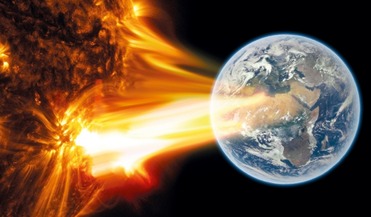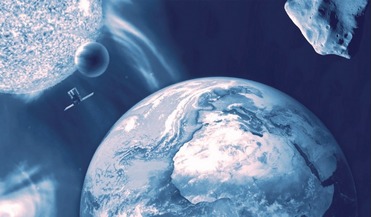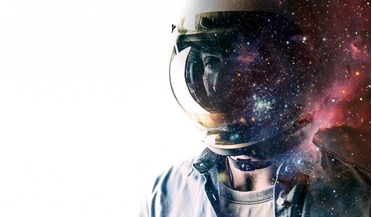ROOM: The Space magazine is one of the leading magazines on space exploration, technology and industry. At ROOM, we share a common goal – advancement of peaceful space exploration for the benefit of humankind, all while bringing you incisive articles on an array of interesting topics. Our authors include scientists and industry leaders from all over the world, which lets us bring you the newest and comprehensive information about sputnik launches space age.
 January 2019
Saving humanity – is space up to the job?
January 2019
Saving humanity – is space up to the job?
... new systems to beam clean energy to Earth and create new cost-efficient launch systems such as mass driver launch systems on the Moon. Space Age 2.0 is about stretching our imaginations to give the human race new hope ... satellites, and even causing blackouts. Opportunities and responsibilities The future is not what it used to be. Space Age 2.0 brings with it the opportunity to protect our spaceship Earth from the many cosmic hazards that we now...
 February 2020
Visions of spaceflight before the Space Age
February 2020
Visions of spaceflight before the Space Age
...of articles in Collier’s magazine in 1952-54 that envisioned the coming space age. These articles were later published in book form, including Across the Space Frontier (Viking, 1952) and Conquest of the Moon (Viking, ... hundred books of speculative nonfiction on human spaceflight published since the early 1900s. After the launch of Sputnik, the number of books about spaceflight increased significantly as people around the world sought information ...
 January 2023
Original Sin - Power, Technology and War in Outer Space
January 2023
Original Sin - Power, Technology and War in Outer Space
... reform cannot happen without understanding past and present political reality in space. The biggest stain on benign images of space technology and the Space Age is that it helped bring about the prospect of nuclear Armageddon.... became home to satellite control systems and launch sites. The anarchy of the international system of space-faring states that compete militarily among themselves exists in space as the tethers of modernity have reached ...
 August 2018
AI offers new approach to space situational awareness
August 2018
AI offers new approach to space situational awareness
...much more powerful tool that mimics the biological process of vision. Space situational awareness (SSA), is an integral part of the new Space Age, wherein greater automation and autonomy are essential to provide the ...VAE has applications for SSA for example by modelling variations within space objects. Paradigm shift Space situational awareness is an integral part of the new Space Age One of the most recent developments is a concept known ...
 June 2022
Space activities and space debris - finding an ethical balance
June 2022
Space activities and space debris - finding an ethical balance
... ethical challenges. Since the beginning of the Space Age, heralded by Sputnik 1 reaching low Earth orbit (LEO) in 1957, more than 6,000 successful launches have led to the problem of space debris: defunct human-made objects – or ...are not advancing as fast as new satellite launches – nor on commercial organisations and the need for them to develop sustainable business models that support space debris mitigation from the earliest stages of mission ...
 July 2019
Who owns outer space?
July 2019
Who owns outer space?
... been called an “ideological charter for the Space Age”, having come into force in 1967 amidst the tense atmosphere of the Cold War. According to lawyer and scholar, Carol R Buxton, the launch of Sputnik in 1957 sent “waves of alarm through...
 August 2020
Opportunities for young people in the space sector
August 2020
Opportunities for young people in the space sector
... targeted to each stage of their development, leading to an exciting and rewarding career in the space sector. At the birth of the Space Age, the USSR and the United States were the only nations involved, with funding...rocketry teams from around the world against each other to launch rockets up to heights of 30,000 feet. Space for everyone Some activities aim to showcase a spectrum of space-related jobs, not just focusing on the traditional STEM ...
 November 2019
The economic promise of space
November 2019
The economic promise of space
... on the Moon by the end of the 1960s became a reality and we seemed to be at the dawn of a true Space Age, when humans would routinely live and work on the high frontier. An infrastructure of scientific and commercial platforms...Shuttle era, payloads to orbit cost an average of US$30,000 per kg; today, that number is down to US$5000. As launch costs decrease, and access to orbit and beyond becomes something that ordinary people can achieve safely...
 January 2021
Time to change our relationship with space?
January 2021
Time to change our relationship with space?
...it a sense of adventure, danger and romance reminiscent of the cultural impact of the Space Age. Isn’t this our destiny, isn’t this what ‘Space’ is all about? Chris Lee argues that humanity’s destiny today remains Earth and... rivalry and nationalism we have on Earth! When Apollo was launched there were very few spacefaring nations on the United Nations’ space roster. Today the UN space family numbers over 100. Let human spaceflight come to embrace...